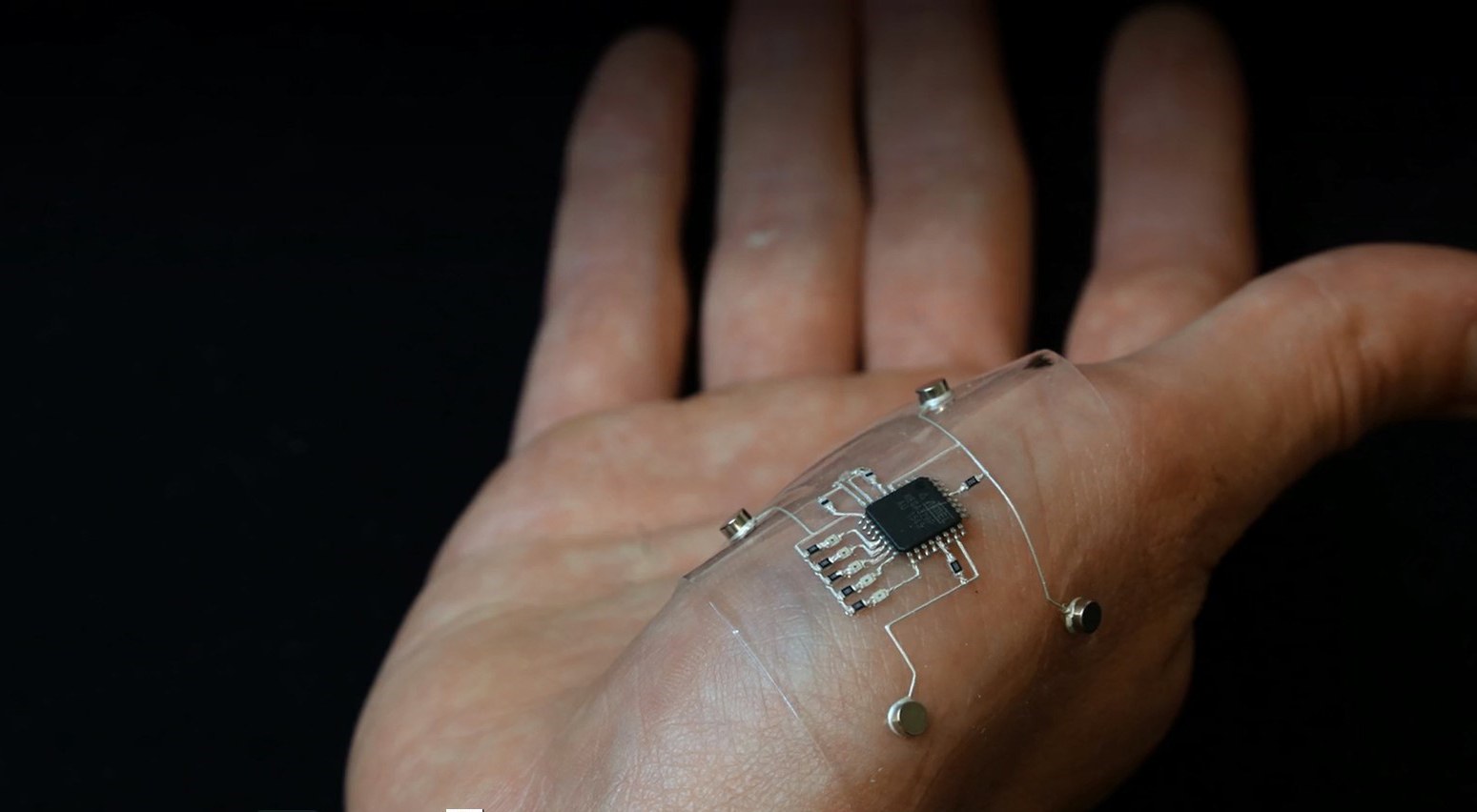Wearable technology must be flexible if it’s going to be worn by flexible body parts. The ability to 3D print such technology could reshape how the Air Force approaches future projects of this ilk, as well as be applied to antennas and sensors on non-human devices. Photo courtesy of Harvard Wyss Institute for Biologically Inspired Engineering.
A team of scientists, including Air Force Research Laboratory researchers, have introduced a novel way to create flexible electronics, potentially reshaping how USAF creates electronics for airmen and airframes.
A team from AFRL and Harvard University’s Wyss Institute for Biologically Inspired Engineering has come together to work on what they call hybrid 3D printing. This process is the first of its kind, creating a single process in which two methods of 3D printing, direct ink writing and automated pick-and-place, occur. The team described their breakthrough on Sept. 6 in the Advanced Materials Journal (you can preview the article “Hybrid 3D Printing of Soft Electronics”).
In 3D printing (whose promise and peril to USAF was examined by Air Force Magazine), direct ink writing means printing layers into three-dimensional objects, which is how most people understand additive manufacturing, another word for it. For example, a program would command a robotic nozzle to continuously draw a material in a certain pattern, then repeat the same pattern to create a second layer on top of the first one, and then repeat the process until the desired object is formed. In this case, the materials were conductive.
Automated pick-and-place, in this instance, refers to printing capability by which surface mount electronic components can be dropped onto the printing materials.
Here’s how the Wyss Institute explains it:
“Starting from nothing, the printer builds an entire stretchable circuit that blends the mechanical durability of printed components with the robust performance of off-the-shelf electronics,” said Dan Berrigan, a research scientist at the AFRL Materials and Manufacturing Directorate, in AFRL’s release about the breakthrough.
During testing, circuits kept working even as the flexible materials upon which they were printed stretched up to 30 percent from their original size. While the application of such a breakthrough is obvious to wearable tech, the team aims to turn focus on using hybrid 3D printing in manufacturing antennas and sensors.
Despite the breakthrough in the printing method, flexible technology requires flexible energy. Currently, printable power sources aren’t sufficient.
“Integrating a robust, flexible, and high energy-density battery has been difficult because what makes a good battery does not necessarily make for a good, soft-material system,” said Michael Durstock, AFRL Soft Matter Materials Branch chief and a co-author of the study.
Soft electronics, the field in which this research is taking place, is currently in a growth spurt as wearable electronics, robotics, and biomedical devices are gaining friction in the private sector, according to the study.
This article is the first to come from this AFRL/Harvard marriage, perhaps a precursor to what AFRL’s recently announced, year-long review of its science and technology processes will find, the partnership with academia being an integral focus of the initiative.
